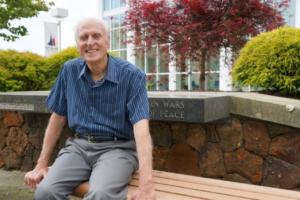Dr. William J. Rickert Lecture Series for April 2022

April 13, 2022
OCC’s Math Club and Environmental Club present the Dr. William J. Rickert Lecture Series.
In this lecture series, topics in mathematics are explored beyond normal classroom presentations. Students will have the opportunity to see the human side of mathematics and be exposed to mathematical concepts and history they may never have experienced before. All lectures will be in HyFlex – choose to attend lectures in person or virtually via WebEx.
- “Numbers in Astronomy and Physics” by Professor Richard BradyThursday April 7, 2022 4:00 PM to 5:00 PM
INST 115
Meeting link: https://ocean.webex.com/ocean/j.php?MTID=mb571be4f37cd6cb651c622e042728190
Meeting number: 2634 256 5704
Password: eJNCkwPX788
This lecture explores the synergy between Physics, Astronomy, and Mathematics. The origin of the fundamental units of measure will be discussed. Examples of extremes of length, time, and mass will be given. Some interesting physical constants will be presented. This will include the fine structure constant; whose value leads one to wonder if the Universe is fine tuned. Finally, the question, “Are constants constant?” will be addressed.
- “Gosh Numbers and Mathematical Magic” by Dr. William Rickert Tuesday April 12, 2022 4:00 PM to 5:00 PM
INST 115
Meeting link: https://ocean.webex.com/ocean/j.php?MTID=m9cd4d90ea1d6717b3857b684262cdc72
Meeting number: 2630 052 2348
Password: nuTChyPh635
This presentation explores amazing relationships among numbers. Those who attend will witness what appears to be mathematical magic and mind reading tricks using numbers. This presentation will be all fun and games as long as no one divides by zero.
- “Careers in the Video Gaming industry” by Prof. Scott MolnarThursday April 14, 2022 4:00 PM to 5:00 PM
INST 115
Meeting link: https://ocean.webex.com/ocean/j.php?MTID=mb5298f3a6bc264ec19cad48cd73b1bc8
Meeting number: 2634 164 3423
Password: 2KptskURi76
The computer gaming industry is a multi-billion-dollar industry that continues to grow rapidly year after year. Potential career paths in this industry include programming, level design, numerous art related jobs, as well as business and management areas. The presentation will include a talk about the current classes that are being offered at OCC in this field with plans to add additional classes based on the needs of both the industry and the students’ plans for their future.
INST 114
Meeting link: https://ocean.webex.com/ocean/j.php?MTID=m05aba69b65f628276ac242956e84a914
Meeting number: 2631 552 1309
Password: 5QEjcrKqX26
As it turns out, the concept of Nothing is very much more complicated than it might seem.
Does it even exist? Philosophy, religion, science, and mathematics all have to struggle with the issues that come from nothing. This light-hearted presentation will open up some of the conceptual problems that nothing brings about.
- “Career Paths in Anatomy” by Dr. Caterina GibsonThursday April 21, 2022 4:00 PM to 5:00 PMINST 115Meeting link: https://ocean.webex.com/ocean/j.php?MTID=m074e04ea55c6bbb5d22c48671dff3f1bMeeting number: 2633 841 7131Password: NpdrWXdy869
Dr. Gibson is a licensed Chiropractor in New York and New Jersey, and has a Doctorate degree in Chiropractic, along with a Master of Science degree in Human Anatomy & Physiology. She has experience working in a multi-discipline practice, treating sports injury rehabilitation, personal injury, workers compensation patients, and has worked in-house as a corporate Chiropractor. Dr. Gibson has taught Anatomy & Physiology, and General Biology for 15 years, and will discuss A & P/Science degrees bridging into career paths.
- “The Telegraph – An Innovation that helped the North win the Civil War”by Professor Charles Cebula
Tuesday April 26, 2022 4:00 PM to 5:00 PM
INST 115
Meeting link: https://ocean.webex.com/ocean/j.php?MTID=m2de8a9ec9ba328920774c785d660c9f4
Meeting number: 2633 624 0183
Password: unWCWCxS335
The presentation will focus on why the telegraph, with support from President Lincoln, became a major contributor to success of the Union in winning the Civil War. Comparisons of North and South of telegraph capability and commitment for use of the telegraph will be examined. Examples of how the telegraph helped support battle field situational awareness and success will be presented. Some aspects of technology used in this era such as battery technology, repeaters, use of encryption and balloon technology will also be addressed.
- “Mathematics, Music to Your Ears” by Professor Julia KimWednesday April 27, 2022 2:00 PM to 3:00 PM
GRUNIN A203
Meeting link: https://ocean.webex.com/ocean/j.php?MTID=mfda94fe2d295e1662931d533855430f7
Meeting number: 2631 294 0585
Password: JjPqiYEJ839
Mathematics and music have many things in common. Professor Kim will explore these connections by examining the musical experience from a mathematical perspective, including the fact that our brain recognizes musical patterns the same way it recognizes numerical patterns. All this will come to life with musical examples played by the speaker on her violin with a pianist, Prof. Gilmore.
- “Iterated Maps: Self Similarity and Fractals” by Dr. Vandana SainiThursday April 28, 2022 4:30 PM to 5:30 PMINST 115
Meeting link: https://ocean.webex.com/ocean/j.php?MTID=m0813edddc8007d121354f141b2a43a03
Meeting number: 2632 290 2117
Password: 3DWqWHxJR82
If a small part of a figure contains copies of the whole, it is called self-similar. The simplest self-similar figures are constructed by iteration. Iteration means repeating a process a number of times, for example, an iterated function is a function that is applied repeatedly to an object. In particular, we will study the behavior of the logistic map under iterations. We will also look at the bifurcation diagram for the logistic map and demonstrate the self-similarity in it. The discussion will end with a few examples of other iterative processes which generate fractals.